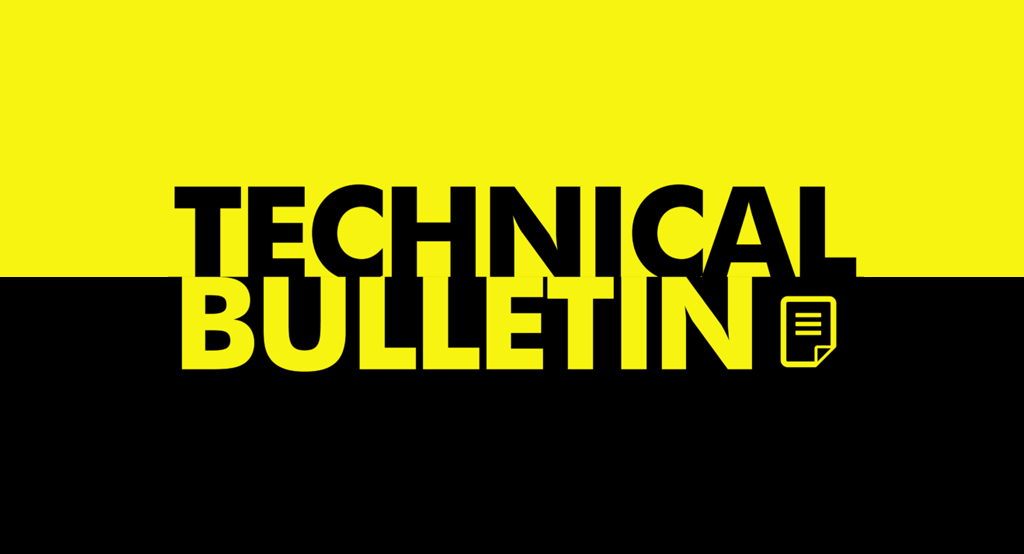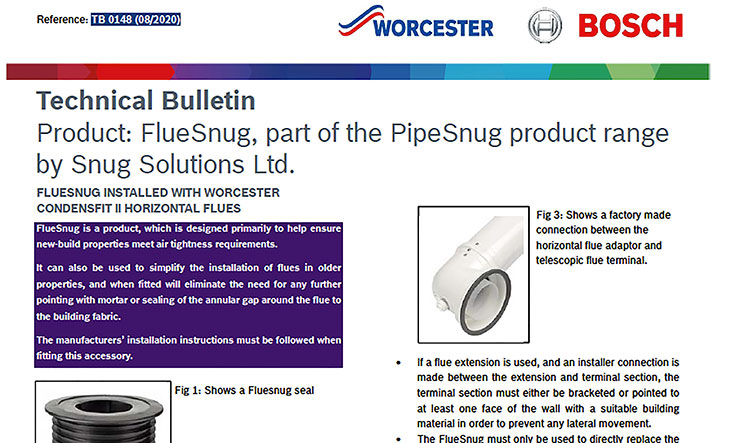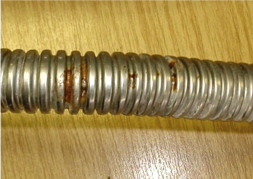
Technical Bulletin 152
Technical Bulletin 152: Securing and Sealing horizontal chimney terminations
Date issued: January 2018
Developed by the Large Business Forum (LBF).
This Technical Bulletin has been written by the Large Business Forum (LBF) to provide industry guidance on securing and sealing horizontal chimney terminations.
Introduction
This Technical Bulletin has been written by the Large Business Forum (LBF) to provide guidance for Gas Safe registered engineers to ensure horizontal chimneys/flues and their terminations are correctly secured and sealed.
This Technical Bulletin focuses on the installation of a chimney/flue system through exterior walls of traditional or similar construction, eg, brick/blockwork cavity walls only. It does not pertain to chimney/flue systems passing through internal walls/structures, where additional considerations may need to be given to requirements such as fire stopping.
Securing and sealing of chimneys
When fitting a chimney/flue, there are two distinct and separate requirements for the installer to consider:
- Weather-proofing of the termination to prevent weather and/or combustion product entry
- Security of the chimney to prevent disconnection.
The manufacturer’s instructions will often offer guidance on the above, especially when extended chimney/flue runs are used. Manufacturer’s guidance shall be followed, however, to give greater consideration to points 1 and 2 above.
Weather-proofing of the termination to prevent weather and/or combustion product entry
A correctly installed weather collar will prevent ingress of weather and combustion products. In isolation, this
may not ensure the chimney/flue is secure.
Figure 1: Although these seals may make the chimney/flue weather-tight, they may not prevent lateral movement as shown by the arrows, which would enable easy disconnection
Security of the chimney/flue to prevent disconnection
Some chimneys/flues require screws in the joints to ensure they remain intact, however, others are push-fit. If there is doubt, the manufacturer of the appliance shall be consulted to confirm whether screws are required.
In such instances, the ability of the chimney/flue to retain its integrity should be considered, eg, push-fit with only a rubber weather collar for a seal (as shown) could become disconnected, or could be disconnected by a person either internally or externally from the property.
Use of sand and cement to seal the chimney to the fabric of the building would satisfy both points 1 and 2. The diagrams below show how sealing the chimney/flue to the fabric of the building secures the chimney/flue.
The installation of a proprietary chimney/flue clamp, or the installation of an approved terminal guard may also help mitigate the risk.
BS 5440 Part 1: 2008(1) does not state exactly what material is to be used to seal and secure. Where a manufacturer provides specific guidance on how to correctly seal and secure the chimney/flue, this guidance shall be followed.
Note 1: Where a terminal guard is required, it should be of a material able to withstand the corrosive properties of condensing products of combustion.
Note 2: Most external manufacturers’ weather seals will require work to secure the chimney/flue to the building fabric, eg, sand and cement.
Note 3: Inspection by Gas Safe Register looks to determine whether the installation meets the criteria of both BS 5440 Part 1: 2008(1) and that of any guidance provided by the appliance manufacturer, so that the chimney/flue is secure, stable and adequately sealed to the fabric of the building. This approach is considered appropriate and is fully supported by the Large Business Forum.
Entry of combustion products
Where an inadequately sealed and/or secured chimney/flue is encountered and products of combustion have been confirmed as entering the property, then this is an Immediately Dangerous situation and appropriate actions must be taken to make the appliance safe (disconnection or rectification). Guidance is provided in the current Gas Industry Unsafe Situations Procedure (GIUSP)(3). Attach the appropriate warning label to the appliance and complete/issue a warning notice.
Where an inadequately sealed and/or secured chimney/flue is encountered and the entry of products of combustion into the property has not been confirmed, then the installation should be risk assessed and the appropriate information given/action taken based on the level of risk identified.
Sealing the annular space around a chimney/flue with ‘sealants’ other than sand
and cement
If, during installation, Gas Safe registered engineers are unable to confirm the suitability of a sealant, eg, an expanding foam product or silicone, from both the boiler and sealant manufacturers, then the sealant product should not be used.
Due to shrinkage and potential UV degradation, etc, where a Gas Safe registered business encounters an installation where the chimney/flue has been sealed to the structure using sealant, it should be inspected to ensure the integrity of the seal is maintained.
Note 4: The GIUSP (TB 001(3)) can be viewed by logging into your online account at https://www.gassaferegister.co.uk/sign-in/
Note 5: Similar legislative requirements apply in other geographical areas covered by Gas Safe Register. For details of current gas safety legislation, building legislation and industry standards for the geographical areas covered by Gas Safe Register, see the Legislative, Normative & Informative Document List (LNIDL)(4) by logging into your online account at https://www.gassaferegister.co.uk/sign-in/
Note 6: For general information about the process behind the development of Gas Safe Register Technical Bulletins and the expectations for all Stakeholders, see TB 1000(5) by logging into your online account at https://www.gassaferegister.co.uk/sign-in/
Bibliography
(1) BS 5440-1: 2008 – Flueing and ventilation for gas appliances of rated input not exceeding 70kW net (1st, 2nd and 3rd family gases). Part 1 – Specification for installation of gas appliances to chimneys and for maintenance of chimneys
(2) BS 7967:2015 Guide for the use of electronic portable combustion gas analysers for the measurement of carbon monoxide in dwellings and the combustion performance of domestic gas-fired appliances
(3) Technical Bulletin 001 – The Gas Industry Unsafe Situations Procedure (Current Version)
(4) LNIDL – Gas Safe Register Legislative, Normative & Informative Document List
(5) TB 1000 – An introduction to Gas Safe Register Technical Bulletins
Download Technical Bulletin 152 here.





